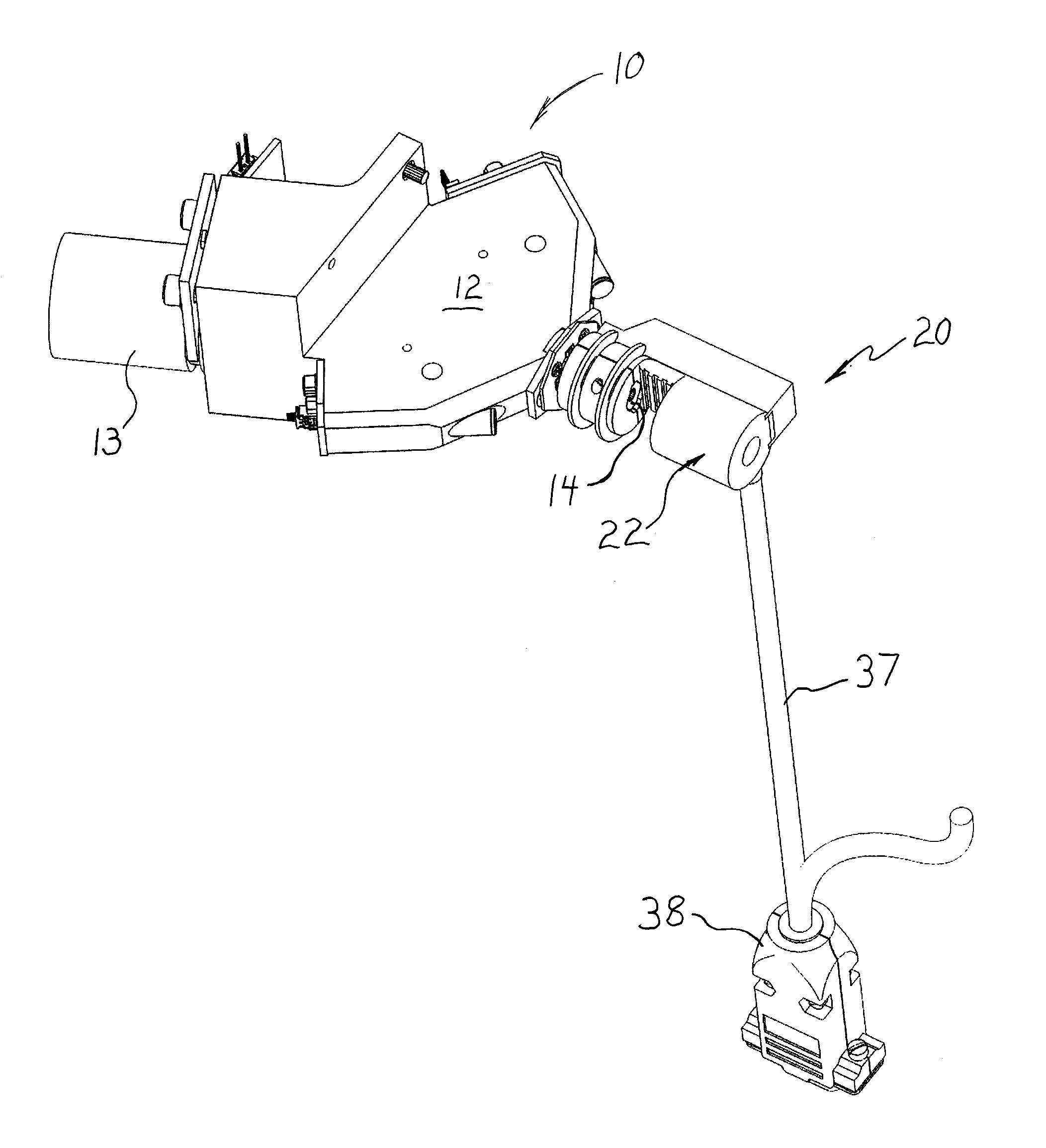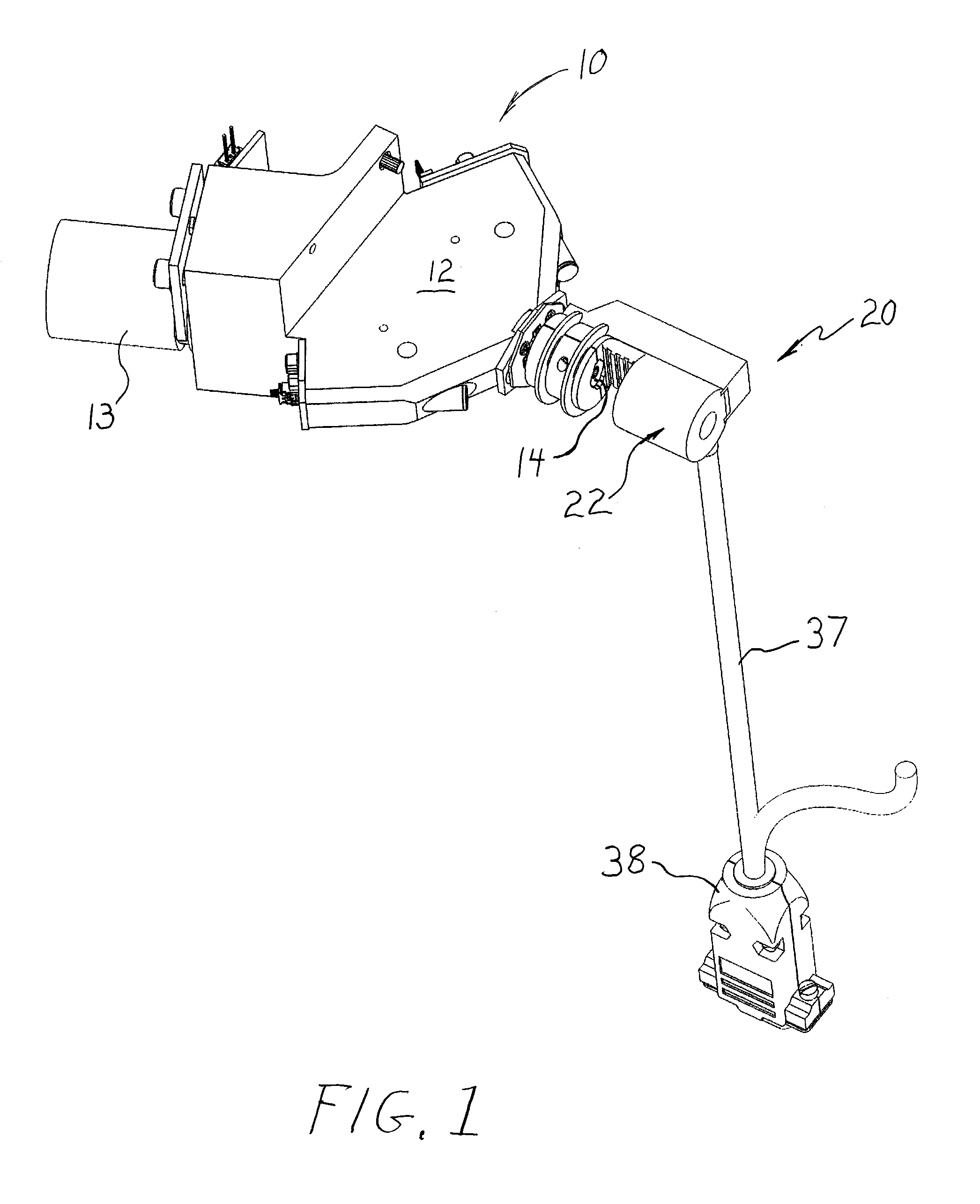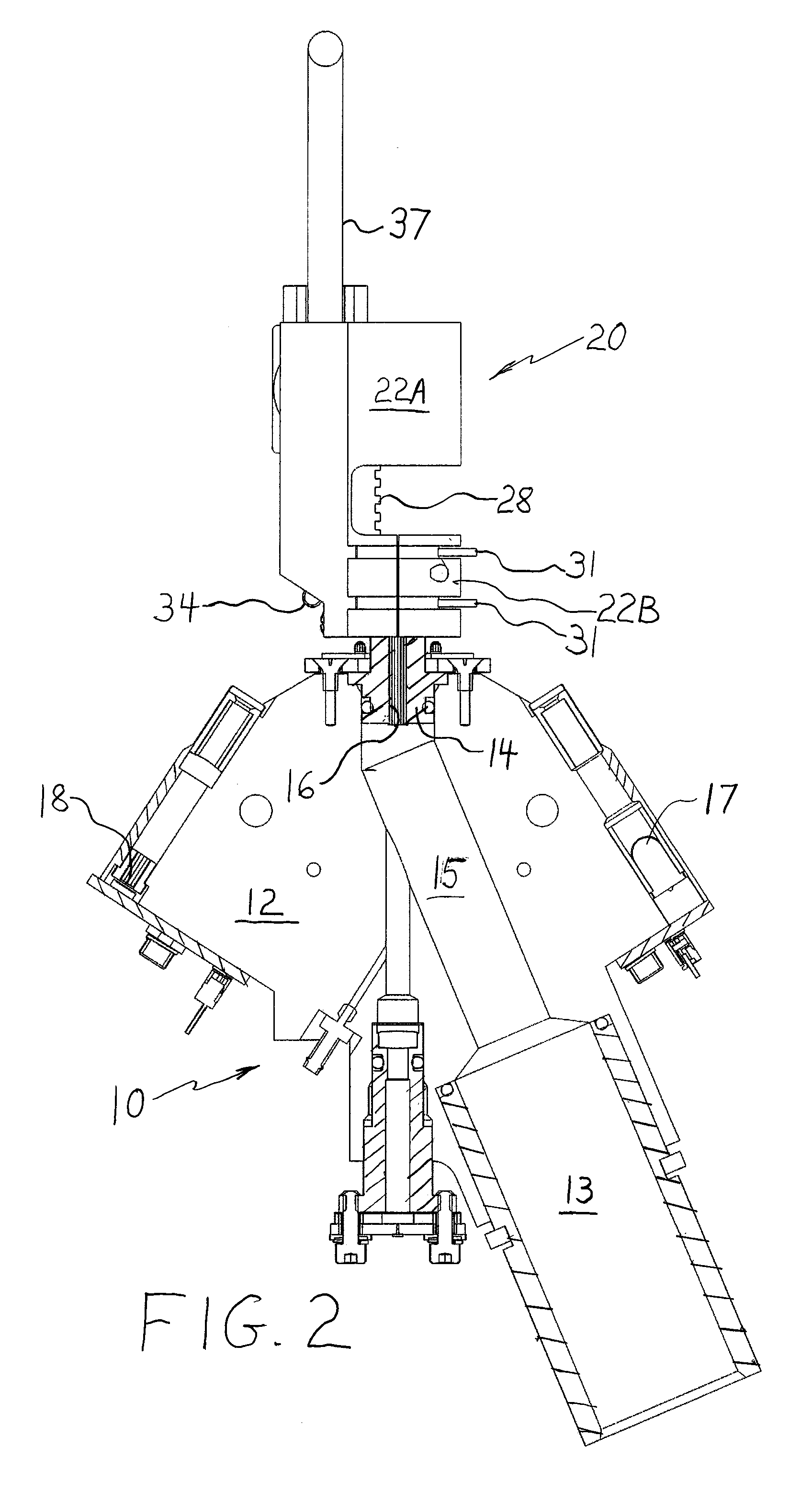Tonometer calibration tool
- Summary
- Abstract
- Description
- Claims
- Application Information
AI Technical Summary
Benefits of technology
Problems solved by technology
Method used
Image
Examples
first embodiment
[0025]FIGS. 1-4 illustrate the present invention. In FIG. 1, a non-contact tonometer (“NCT”) is identified generally by reference numeral 10. NCT 10 is operable to measure intraocular pressure of an eye by discharging an air pulse at the eye to applanate a cornea of the eye. For this purpose, NCT 10 includes a measurement head 12 and a nosepiece 14 carried by the measurement head, wherein the nosepiece includes a fluid discharge passage 16 for discharging the air pulse along a test axis at the cornea. The air pulse may be generated by a pump mechanism (not shown) communicating with a plenum 13, and the air pulse is conveyed through a conduit 15 in measurement head 12 to discharge passage 16. Discharge passage 16 defines the test axis along which the fluid pulse travels toward the cornea, and may be a passage formed directly within nosepiece 14 or may be formed by a thin tube embedded or fixed in the nosepiece. As will be readily understood by those skilled in the art of non-contact ...
second embodiment
[0033]FIGS. 5-8 show a tonometer calibration tool 40 formed in accordance with the present invention. Calibration tool 40 comprises a body 42 configured to be directly and removably mounted on measurement head 12 of NCT 10 instead of nosepiece 14. More specifically, body 42 includes a mating feature in the form of a pair of mounting pins 44A, 44B sized for receipt by a corresponding pair of mounting holes 19A, 19B in measurement head 12. One of the mounting pins may be hexagonal (see mounting pin 44B in FIG. 7) to facilitate insertion of mounting pins 44A, 44B into mounting holes 19A, 19B.
[0034]Body 42 includes a sensor portion 41 for housing pressure sensor 30 and emitter 34. In the embodiment shown, sensor portion 41 includes a sensor block 42A and a support member 42D. Body 42 also includes a mounting block 42B from which the pair of mounting pins 44A, 44B extend and a bridge member 42C connecting sensor portion 41 to mounting block 42B. Sensor block 42A may be fixed to bridge me...
PUM
 Login to View More
Login to View More Abstract
Description
Claims
Application Information
 Login to View More
Login to View More - R&D
- Intellectual Property
- Life Sciences
- Materials
- Tech Scout
- Unparalleled Data Quality
- Higher Quality Content
- 60% Fewer Hallucinations
Browse by: Latest US Patents, China's latest patents, Technical Efficacy Thesaurus, Application Domain, Technology Topic, Popular Technical Reports.
© 2025 PatSnap. All rights reserved.Legal|Privacy policy|Modern Slavery Act Transparency Statement|Sitemap|About US| Contact US: help@patsnap.com



